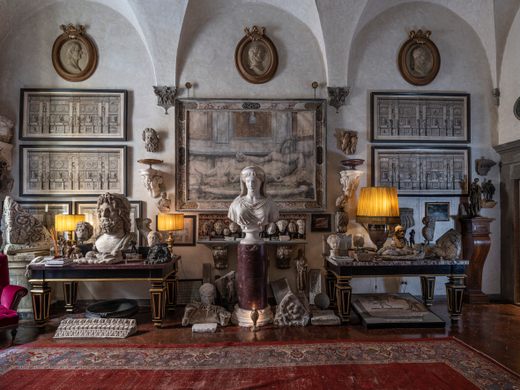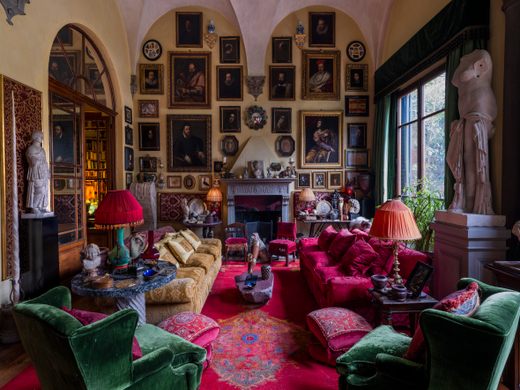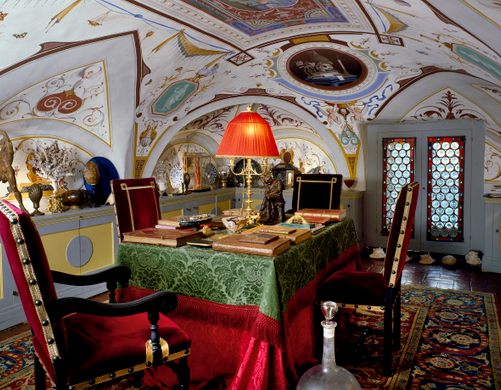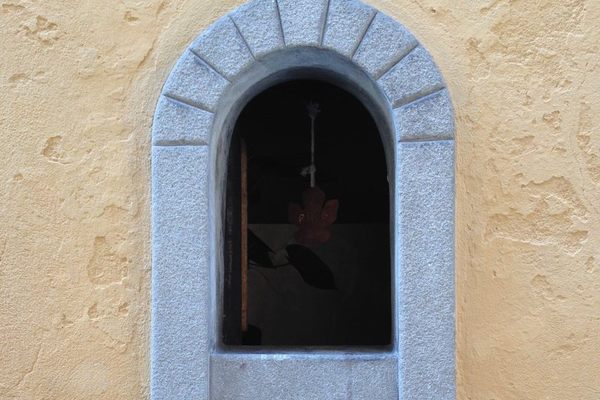Massimo Listri Foundation
An extraordinary house museum and cabinet of curiosities in the heart of Florence.
Florence, the cradle of the Renaissance, is admired around the world for its imposing monuments and public museums. But beyond the city’s most famous collections, privately-owned collections and art foundations are an essential part of the culture of Tuscany’s capital. One of the most fascinating private house museums in Florence is the Massimo Listri Foundation, which is located in the heart of the historic Oltrarno district.
Listri is an acclaimed architectural photographer who is known for his majestic and metaphysical vision of world heritage sites such as the Vatican and the Louvre. He boasts an impressive list of more than 70 photography publications and collaborations with prestigious art publishers. Listri is also a passionate art collector, who acquired the 16th century palace of the Order of Santo Stefano to accommodate his marvelous cabinet of curiosities. After photographing hundreds of magnificent houses, Listri was inspired to create his own masterpiece, a residence known for its magical atmosphere and an infinite sense of the sublime.
On their first tour of the house, visitors will be astonished by the grandiosity of the vestibule. It’s a tribute to classical antiquity with colossal marbles and statues depicting Olympian gods and Roman emperors. There is a superb painting by Baldassare Franceschini, titled “Allegory of Victory and Peace.” The space was influenced by renowned mansions such as Sir John Soane’s Museum in London and the Vittoriale degli Italiani in Gardone Riviera.
The next rooms, for social gatherings and receptions, are embody the spirit of eclectic aestheticism. The living room is embellished by a prominent series of portraits and paintings from the Grand Duchy of Tuscany and a selection of far-flung artifacts: an Egyptian table made from red porphyry, a narwhal tooth, a horn encrusted with precious stones, Chinese porcelain vases, and more. The adjacent dining room is a captivating and intimate salon entirely painted in the 19th century.
On the ground floor, a romantic garden designed in the monastic horticultural tradition encloses the space. The piano nobile, or principal floor, is equally remarkable for its timeless and exquisite ambience. The dressing room is entirely composed by Japanese folding screens.
The main library, which contains more than 20,000 volumes, is an encyclopedic collection of art history and Listri’s photographic legacy. This universal collection is enriched by treasures collected from around the world: Mesoamerican idols, Benin bronzes, taxidermy pieces, and artwork by Fernand Léger and Fernando Botero.
Last but not least, the most secret room is the studiolo, or office. In this contemporary Wunderkammer you can see fire corals, astronomical instruments, nautilus cups, and ivory miniatures theatrically displayed. The vaulted ceiling is a cycle of trompe l’oeil frescoes that represent alchemical scenes and a vanitas, a still-life painting with motifs related to death.
The Massimo Listri Foundation is a nonprofit institution dedicated to promoting the visual arts and encouraging emerging artists. Listri’s role and mission in the present-day Florentine society is comparable to Lorenzo de’ Medici patronage of arts and high culture in the 15th century. The collection reflects his commitment to preserving past works and supporting future artists.
Know Before You Go
Private visits on request for art historians and academic researchers.


















Follow us on Twitter to get the latest on the world's hidden wonders.
Like us on Facebook to get the latest on the world's hidden wonders.
Follow us on Twitter Like us on Facebook